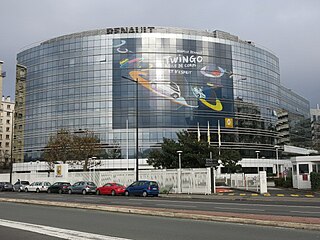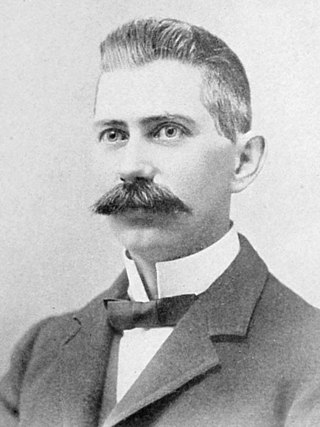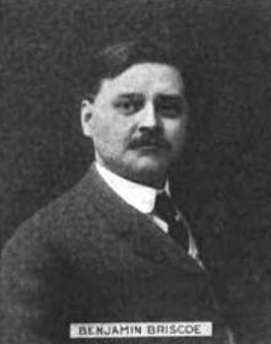
The Overland Automobile Company was an American automobile manufacturer in Toledo, Ohio. It was the founding company of Willys-Overland and one of the earliest mass producers of automobiles.

Groupe Renault is a French multinational automobile manufacturer established in 1899. The company produces a range of cars and vans and in the past, has manufactured trucks, tractors, tanks, buses/coaches, aircraft and aircraft engines, and autorail vehicles.

Maxwell was an American automobile manufacturer which ran from 1904 to 1925. The present-day successor to the Maxwell company was Chrysler, now Stellantis North America, which acquired the company in 1925.

The United States Motor Company (USMC) was organized by Benjamin Briscoe in 1910 as a selling company, to represent various manufacturers. It had begun life as the International Motor Company in 1908 in an attempt to create a major consolidation within the industry with Maxwell-Briscoe and Buick, which did not succeed. International Motor was renamed USMC in December 1909. By the end of 1910, there were 11 constituent companies, each still headed by the individual who had built each company originally. In 1910, rumors surfaced that United States Motor Company was going to merge with General Motors, but Briscoe scotched the rumors by stating that any attempt to integrate General Motors into USMC would create chaos.

Marmon Motor Car Company was an American automobile manufacturer founded by Howard Carpenter Marmon and owned by Nordyke Marmon & Company of Indianapolis, Indiana, US. It produced luxury automobiles from 1902 to 1933.

The Brass Era is an American term for the early period of automotive manufacturing, named for the prominent brass fittings used during this time for such features as lights and radiators. It is generally considered to encompass 1896 through 1915, a time when cars were often referred to as horseless carriages.

Brush Motor Car Company (1907-1909), later the Brush Runabout Company (1909-1913), was based in Highland Park, Michigan.

Auburn was a brand name of American automobiles produced from 1900 to 1937, most known for the Auburn Speedster models it produced, which were fast, good-looking and expensive. However, after the 1929 Wall Street Crash, and the economic downturn that ensued, Auburn's expensive automobiles, along with its also very expensive sister marques Duesenberg and Cord, saw inevitable sales downturns, and all vehicle business halted in 1937.

Delahaye was a family-owned automobile manufacturing company, founded by Émile Delahaye in 1894 in Tours, France. Manufacturing was moved to Paris following incorporation in 1898 with two marriage-related brothers-in-law, George Morane and Leon Desmarais, as Emile Delahaye's equal partners. The company built a low volume line of limited production luxury cars with coachbuilt bodies; trucks; utility and commercial vehicles; buses; and fire-trucks. Delahaye made a number of technical innovations, particular in its early years. After establishing a racing department in 1932, the company came to prominence in France in the mid-to-late 1930s, first with the International record-breaking Type 138; then, the Type 135 that famously evolved into the special short-wheelbase sports-racing Type 135CS; followed by the V12 types 145 and 155 racecars. Many races were won, and records set. The company faced setbacks due to the Second World War, and was taken over by amalgamation with arch competitor Hotchkiss in 1954. Both were absorbed by the large Brandt manufacturing organization, within months, with automotive products ended. Delahaye closed forever at the end of 1954, taking Delage along with it.

The Peerless Motor Car Company was an American automobile manufacturer that produced the Peerless brand of motorcars in Cleveland, Ohio, from 1900 to 1931. One of the "Three Ps" – Packard, Peerless, and Pierce-Arrow – the company was known for building high-quality luxury automobiles. Peerless popularized a number of vehicle innovations that later became standard equipment, including drum brakes and the first enclosed-body production cars.

David Dunbar Buick was a Scottish-born American inventor, widely known for founding the Buick Motor Company. He headed this company and its predecessor from 1899–1906, thereby helping to create one of the most successful nameplates in United States motor vehicle history.
Northern Manufacturing Company was a manufacturer of Brass Era automobiles in Detroit, Michigan, automobiles designed by Charles Brady King. Early advertising included catchy phrases such as "Utility is the Basis for Beauty" and "Built for Business" and the famous "Silent Northern".

Benjamin Briscoe was born in Detroit, Michigan, and was an automobile pioneer and industrialist.

The Pilgrim of Providence also called the Pilgrim of Pawtucket was an American automobile designed in 1910. The car was built as a prototype and called the Spartan.
Buchet was a French motorcycle and automobile manufacturer between 1899 and 1930.

The Lambert Automobile Company was a United States automobile manufacturing company which produced the Lambert automobile from 1905 to 1916. The company was founded by automotive pioneer John William Lambert and was based in Anderson, Indiana.

The Earl was an automobile manufactured in Jackson, Michigan by Earl Motors Incorporated from 1921 to 1923. The Earl was a continuation of the Briscoe. The Model 40 offered both open and closed models with a four-cylinder engine. Approximately 2,000 vehicles were produced. When the Earl debuted in 1921, the tourer cost just $1285. The company also claimed that $100 worth of "extras", such as linoleum floor boards and carpets front and rear were included in the base price.

In the United States, the automotive industry began in the 1890s and, as a result of the size of the domestic market and the use of mass production, rapidly evolved into the largest in the world. The United States was the first country in the world to have a mass market for vehicle production and sales and is a pioneer of the automotive industry and mass market production process. During the 20th century, global competitors emerged, especially in the second half of the century primarily across European and Asian markets, such as Germany, France, Italy, Japan and South Korea. The U.S. is currently second among the largest manufacturers in the world by volume.

The Standard Electric automobile was an electric car manufactured by the Standard Electric Car Company in Jackson, Michigan from 1912 to 1915.

The Maxwell-Briscoe Automobile Company Showroom is a historic automobile showroom located at 1737 S. Michigan Avenue in Chicago's Motor Row District. The showroom was built in 1909 for the Maxwell-Briscoe Motor Company, which was founded in 1904 by Jonathan D. Maxwell and Benjamin Briscoe. William Ernest Walker, a Chicago architect who specialized in large-scale commercial buildings, designed the showroom. The four-story building is divided by brick piers; the ground floor features large plate-glass windows designed to showcase the company's automobiles, while the upper floors feature banks of double-hung and triple-hung windows between the piers. The building uses terra cotta extensively for decoration; a terra cotta stringcourse encircles the building above the first floor, terra cotta pediments and sills frame the window banks, and a terra cotta frieze runs below the roof line. Maxwell and Briscoe used the building as a showroom until 1915; it is one of the oldest surviving auto showrooms on Motor Row.


















